Pump-Free Hot Water Recirculation: Let Gravity Do the Work
By Brian on July 23, 2025
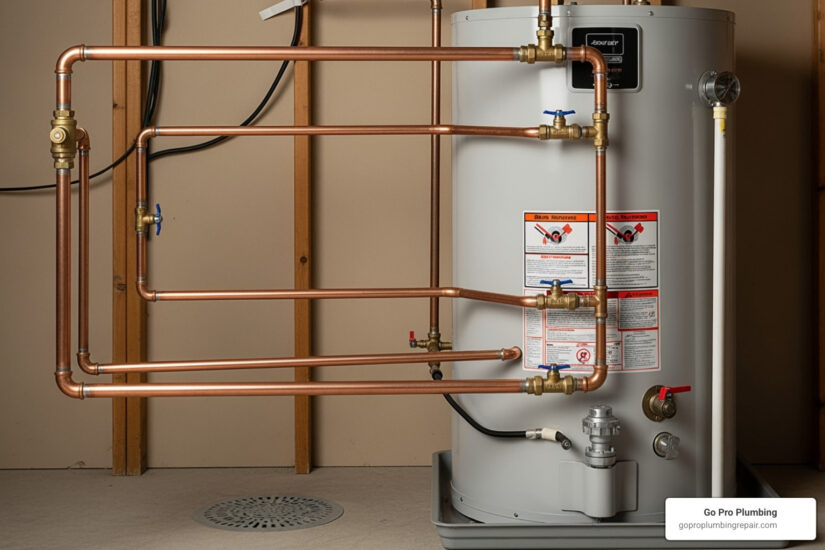
Hot Water On Demand: The Pump-Free Solution
Tired of waiting for hot water to reach your faucet? Many homeowners are, and it often leads to wasted water and frustration. When you’re searching for instant hot water solutions, hot water recirculation without a pump might be the answer you’re looking for.
Heres a quick overview of how it works:
- What it is: A clever plumbing setup that provides hot water to your taps almost instantly, all without using an electric pump.
- How it works: It uses gravity and a natural process called “thermosiphoning.” Hot water naturally rises, and cooler water falls, creating a continuous loop that keeps hot water close to your fixtures.
- Benefits: You save on electricity costs for a pump, enjoy silent operation, and often have a lower initial installation cost compared to pump-based systems. It also saves the thousands of gallons of water annually that would otherwise go down the drain while you wait.
- Ideal for: Homes where the hot water heater is located below the furthest hot water fixtures, allowing gravity to do its job effectively.
Imagine turning on the tap and having hot water ready in seconds. This isn’t just a luxury; it’s a smart way to save water and energy. This guide will explore how simple physics can bring convenience and efficiency to your home’s hot water system, ensuring you never have to stand around shivering again.
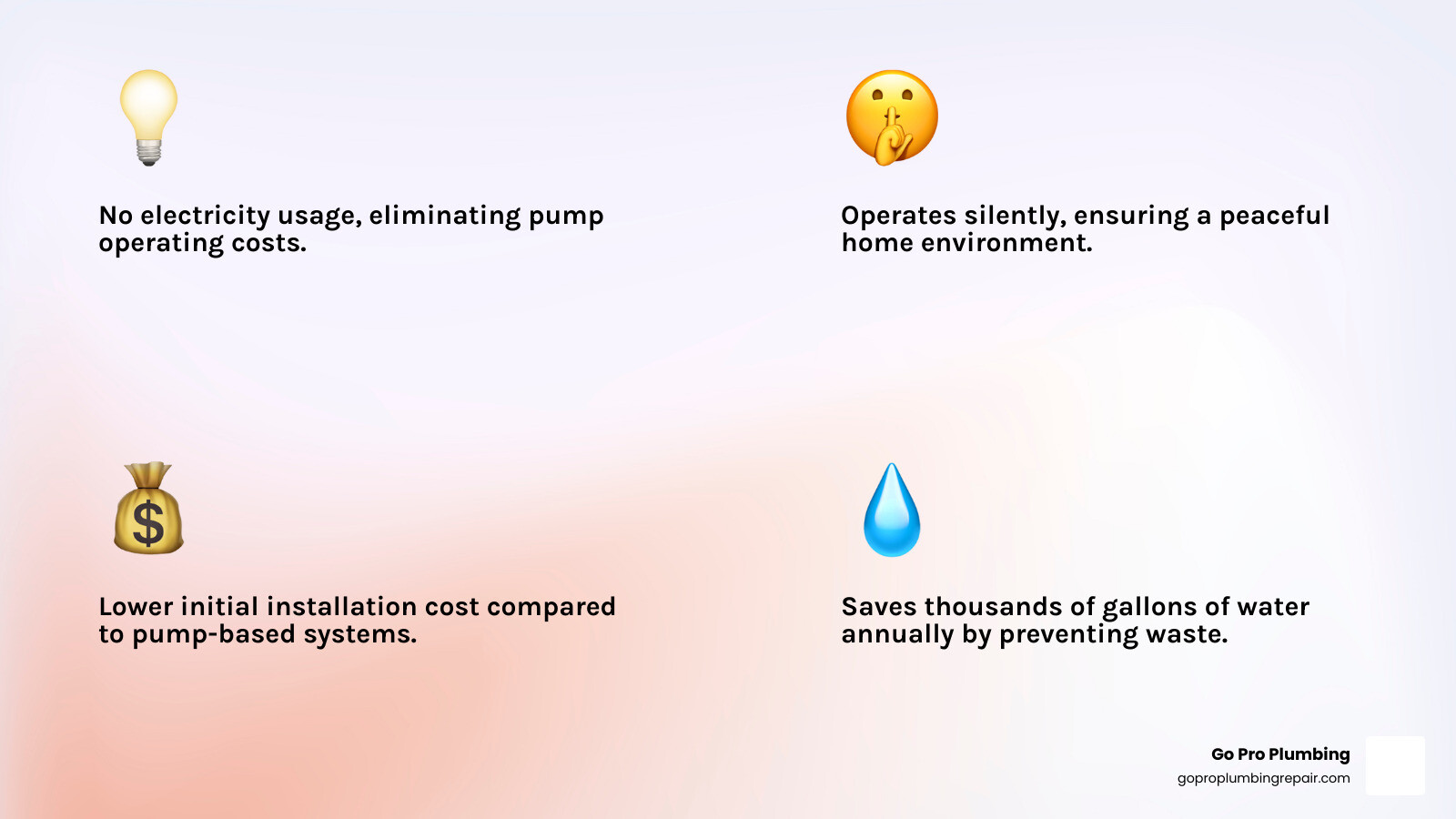
Hot water recirculation without a pump terms you need:
- how does a hot water recirculating system work
- hot water recirculation system design
- are hot water recirculation systems efficient
What is Hot Water Recirculation Without a Pump?
Waiting for hot water at the sink is a common frustration. A clever solution that relies purely on physics is hot water recirculation without a pump, also known as a gravity-fed or thermosiphon system.
How does it work? The system uses convection. Just like hot air, hot water is less dense than cold water, causing it to rise. Cooler, denser water naturally sinks. This difference in density creates a natural, continuous loop. Hot water rises from the water heater into the supply lines. As it travels and cools, it becomes denser and flows down a dedicated return pipe back to the heater to be reheated. This silent, constant process keeps hot water near your faucets, so you don’t have to wait!
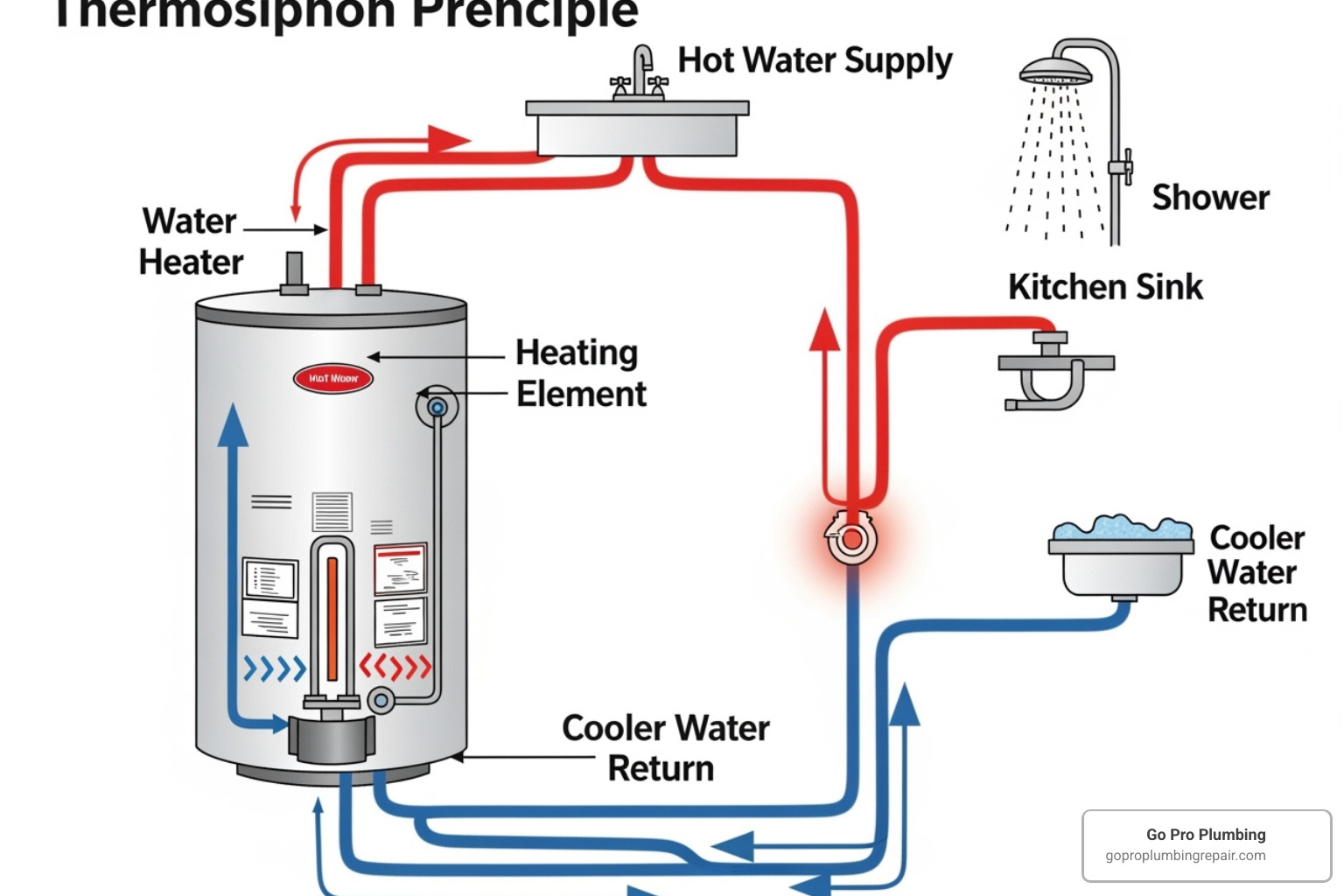
If you’re curious about how any hot water recirculation system works, we’ve got a detailed guide that explains the general principles: how does a hot water recirculating system work.
The Science of Thermosiphoning
The “thermosiphon” is the hero of this system. It’s a perfect example of natural convection, powered by water’s tendency to move based on its temperature. When water in your tank is heated, it expands and becomes lighter, causing it to rise into the hot water pipes. As this water circulates through the loop, it cools and becomes denser. This heavier water then sinks back through the return line to the bottom of the water heater, pushing more hot water up. This creates a continuous, self-sustaining flow driven just by temperature differences—no mechanical parts, no electricity, just pure physics! It’s a passive system that quietly ensures you have hot water on demand.
Why Choose a Pump-Free System?
When our clients at Go Pro Plumbing ask about instant hot water, they often wonder why some systems don’t need a pump. The benefits of a hot water recirculation without a pump system are compelling:
- Simplicity and Reliability: No pump means fewer moving parts, which means less can break down. These systems are incredibly reliable and require very little maintenance, making them a “set it and forget it” solution.
- No Electricity Cost for a Pump: A gravity-fed system uses zero electricity for recirculation. You completely cut out the extra power consumption of a pump, which can add up to 400-800 KWH per year if it runs constantly.
- Silent Operation: Pumps can create a soft hum or vibration. A pump-free system is completely silent, keeping your home peaceful.
- Lower Initial Cost: Since you don’t need to buy a pump, you can save a good chunk of change upfront—potentially around $500. This makes hot water recirculation without a pump an attractive option if you’re looking for an efficient solution without a hefty initial investment.
Designing an Effective Gravity-Fed Recirculation System
Building a successful gravity-fed system requires careful planning. The effectiveness of hot water recirculation without a pump hinges on a design that creates a smooth, low-resistance loop, allowing natural convection to work efficiently. Think of it as a lazy river for your hot water!
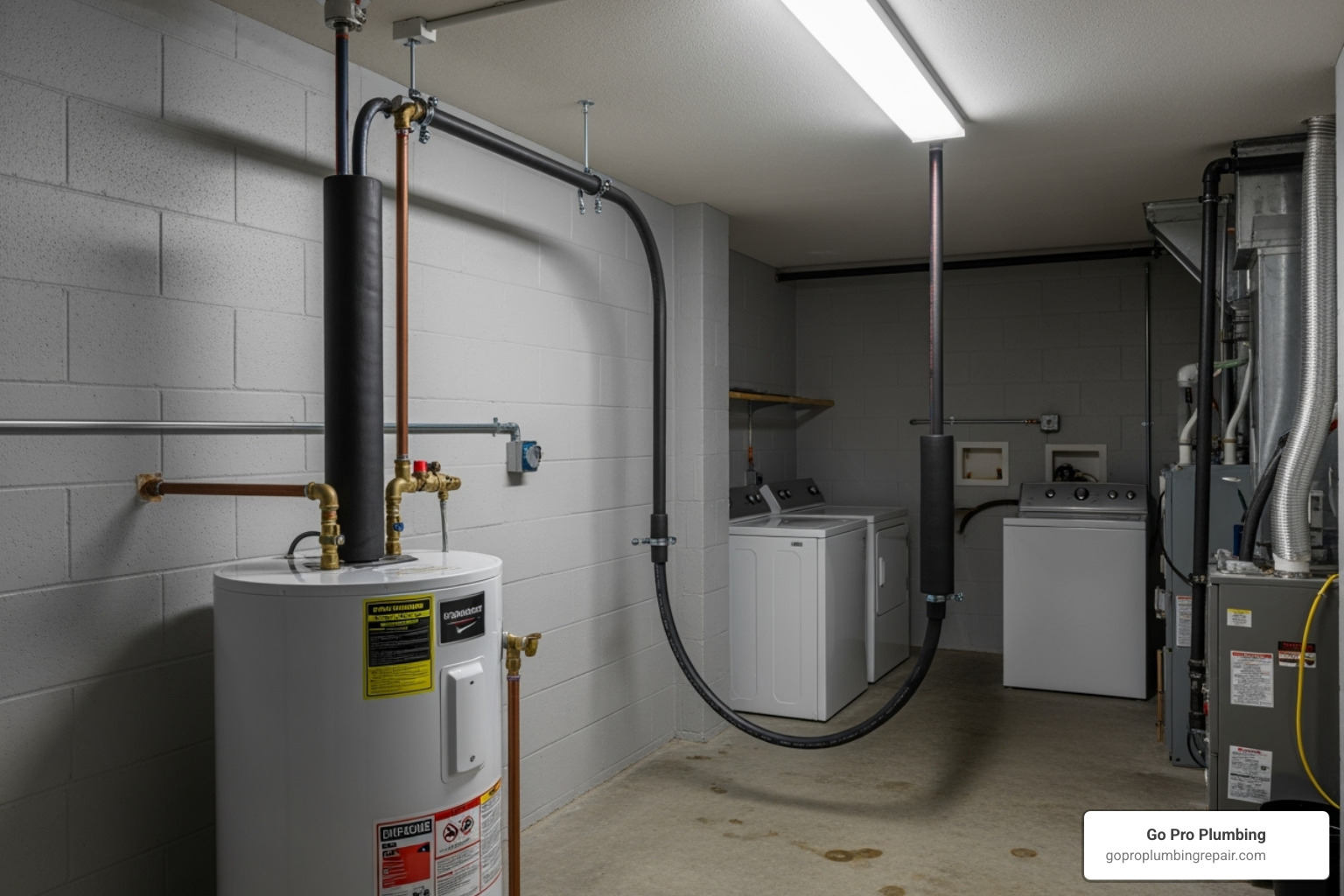
For a deeper dive into expert system design, covering both pump and pump-free options, we’ve got a fantastic guide right here: hot water recirculation system design.
Essential Plumbing Components
To build an efficient thermosiphon system, you’ll need a few key components:
- Dedicated Return Line: This is non-negotiable. A true gravity-fed system needs its own return line to complete the loop, allowing cooler water to flow back to the water heater without mixing with the cold water supply.
- Pipe Materials: While various materials work, copper is often preferred for the main loop. It offers excellent heat transfer and is built to last.
- Pipe Sizing: Size is critical. We recommend 3/4-inch diameter pipe for the main recirculation loop to reduce friction and ensure good flow for the gentle thermosiphon effect. Smaller 1/2-inch pipe is usually fine for the lines to individual faucets.
- Check Valve: This is critical to prevent backflow. The type of check valve is incredibly important, as it must offer almost no resistance to flow.
- Swing Check Valve: A disc swings open easily with water flow, making it perfect for the subtle flow of a thermosiphon system.
- Ball Check Valve: A free-floating ball lifts to let water through, also offering minimal resistance.
- Avoid Spring Check Valves! These require pressure to open (usually 0.5 to 2 psi). The gentle flow in a thermosiphon system is not strong enough to open them, which would stop circulation completely.
- Isolation Valves: Installing isolation valves (like ball valves) at key spots is smart plumbing practice. They simplify future maintenance or repairs without requiring you to drain the entire system.
Critical Layout and Installation Factors
The success of your hot water recirculation without a pump system depends on its physical layout, using gravity to your advantage.
- Water Heater Placement: The golden rule: your water heater must be located below the hot water taps it serves. Hot water naturally rises, so if the heater is on the same floor or above the fixtures, gravity will work against circulation. Homes with basements are ideal candidates.
- Vertical Height: The more vertical distance between the water heater and the highest point of the loop, the stronger the thermosiphon effect. Even a few feet of elevation can significantly improve circulation.
- Loop Design (Short Runs, 45-Degree Elbows): Keep the overall loop length as short as possible to minimize heat loss. When making turns, use two 45-degree elbows instead of a single 90-degree elbow. This drastically reduces flow resistance, allowing the gentle current to move more freely.
- Pipe Slope: The return line should have a continuous, gentle downward slope back to the water heater. This ensures cooler water flows back easily by gravity and prevents air pockets.
As master plumber Tim Carter of AsktheBuilder.com notes, these systems are a “simple, inexpensive, and effective” solution for homeowners. You can find an excellent resource on his site: Gravity Hot Water System – No Pump Required.
The Pros and Cons of Thermosiphon Systems
Every plumbing solution has its pros and cons, and hot water recirculation without a pump is no exception. We believe in providing a complete picture so you can make the best decision for your home.
The Upside: Key Benefits of Going Pump-Free
The allure of a thermosiphon system is its simplicity and self-sufficiency. The key benefits include:
- No pump cost, which can save you around $500 upfront.
- No pump electricity usage, which adds up to long-term savings.
- Silent operation, with no mechanical hum or vibration.
- Fewer mechanical failure points, meaning greater reliability and simpler maintenance.
The Downside: Energy Concerns and Potential Drawbacks
While the benefits are clear, it’s crucial to address the energy efficiency concerns of a continuous thermosiphon system.
The biggest drawback is that the system is always on. Because it relies on natural physics, water circulates 24/7. This constant circulation leads to standby heat loss, as pipes continuously radiate some heat. For example, water in a 60-foot loop can lose a noticeable 24°F, which is significant heat escaping into your home.
This means your water heater has to cycle more frequently to replace the lost heat, which can lead to higher energy bills if the system isn’t well-managed. An uncontrolled thermosiphon loop can be a quiet but significant drain on energy.
To help you weigh your options, here’s a quick comparison:
| Feature | Gravity-Fed (Thermosiphon) | Pump-Based Recirculation |
|---|---|---|
| Installation Cost | Lower (no pump purchase, potentially saving ~$500) | Higher (pump cost, more complex wiring) |
| Operating Cost | Can be higher due to continuous operation and heat loss | Can be lower if controlled (timer, demand) |
| Energy Use | Continuous, 24/7 (higher standby heat loss) | Can be optimized with controls (lower standby heat loss when off) |
| Maintenance | Simpler (fewer moving parts) | More complex (pump cleaning, potential repairs) |
| Noise | Silent | Can have pump hum/vibration |
| Flexibility | Limited by water heater placement | More flexible (can be used with any water heater location) |
The decision balances initial savings and simplicity against ongoing energy consumption. For a broader look at recirculation system efficiency, check out our insights on are hot water recirculation systems efficient.
How to Optimize and Control Your Pump-Less System
While a hot water recirculation without a pump system is simple, its continuous operation can waste energy if not managed. The key to optimizing a pump-less system is mitigating heat loss and adding controls to manage its “always-on” nature.
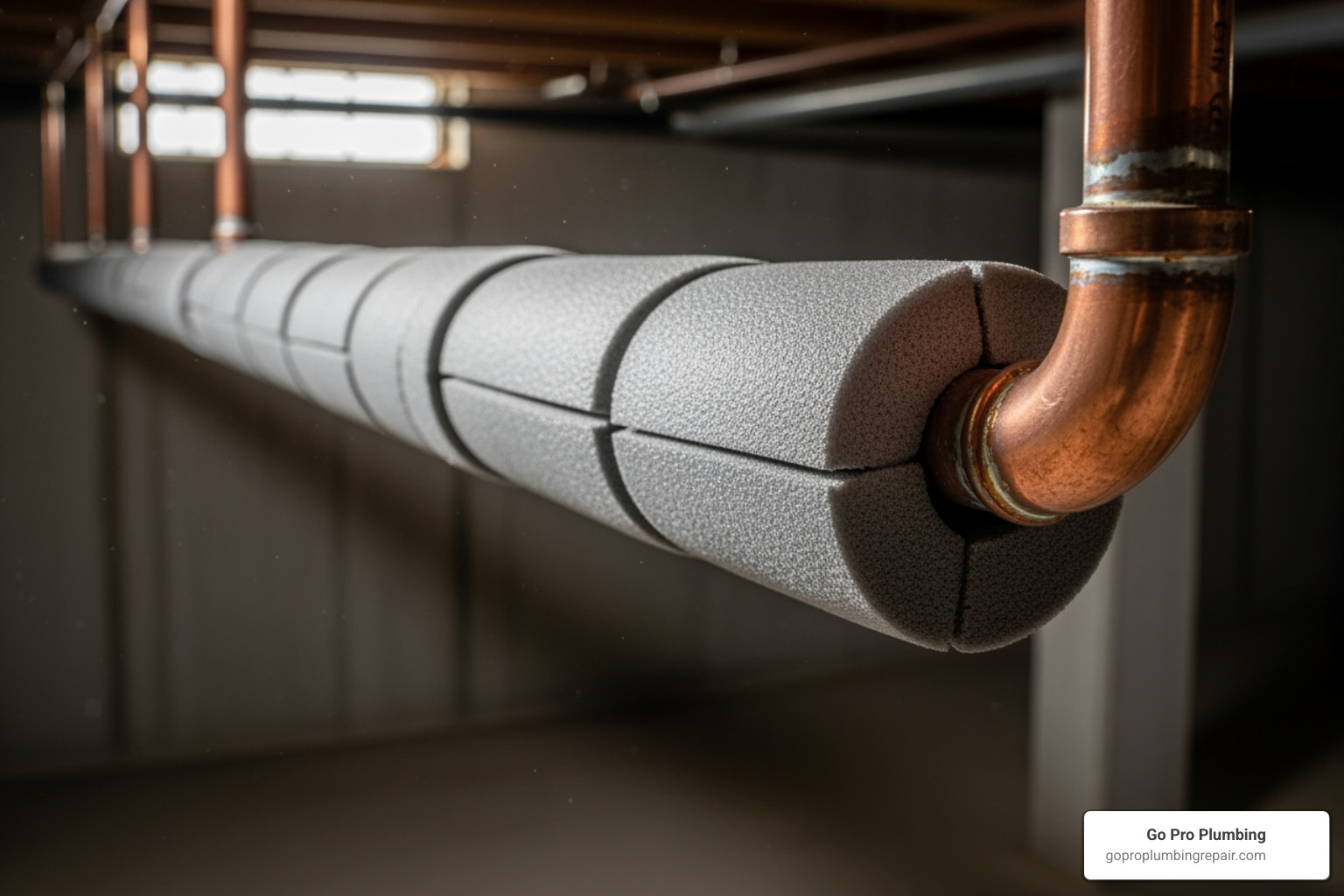
To learn more about maximizing your water heater’s efficiency, explore our tips on water heater energy savings.
The Golden Rule: Insulate All Hot Water Pipes
This cannot be stressed enough: pipe insulation is the single most effective way to improve the efficiency of a thermosiphon system. Wrapping both the supply and return lines of your loop significantly reduces standby heat loss. This means water stays hotter for longer, reducing the workload on your water heater and improving efficiency.
When choosing insulation, look for a good R-value (a measure of heat resistance). Foam insulation tubes are popular and easy to install, while fiberglass insulation offers superior protection in colder areas. While even the best insulation won’t stop all heat loss, it makes a substantial difference. For example, an insulated 50-foot recirculating pipe might cost around $30/year to run, compared to $80/year for an uninsulated one.
Adding Controls to a Passive System
While a true thermosiphon is continuous, some homeowners create hybrid solutions to gain control over energy use. This involves adding components that can temporarily stop the natural flow.
One method is installing solenoid valves on the loop. These electrically operated valves can be paired with timers to schedule recirculation only during peak usage times, like mornings and evenings. This prevents the system from running 24/7, drastically cutting energy waste.
Another option is an aquastat, a temperature sensor on the return line that controls the solenoid valve. The aquastat opens the valve when the water temperature drops and closes it once hot water has circulated. This setup helps in making the system “on-demand” by limiting operation to when it’s actually needed.
It’s all about balancing convenience and energy use. Adding controls may cause a very short delay for hot water, but this trade-off is often worth the significant energy savings. The International Association of Certified Home Inspectors (InterNACHI) offers a good overview of these systems. You can learn more from their insights on Hot Water Recirculation Systems.
Unintended Thermosiphoning: When Gravity Works Against You
Sometimes, plumbing inadvertently creates a loop that allows for “ghost flow” or “unintended thermosiphoning.” This secret recirculation system allows hot water to move when it shouldn’t, constantly wasting energy.
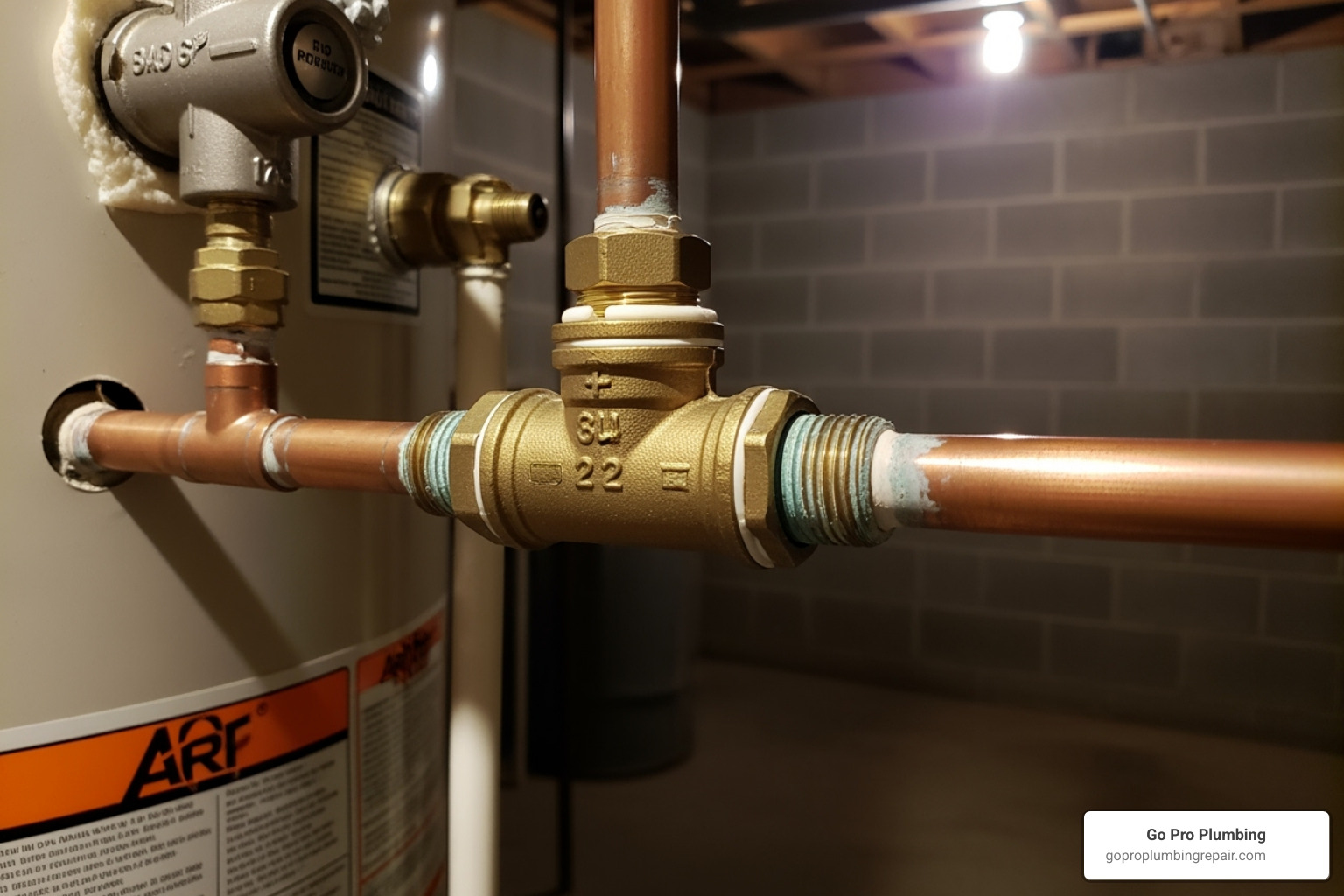
If you’re noticing strange things with your hot water, our team at Go Pro Plumbing can help. For more insights, check our guide on common recirculation system problems.
Signs of an Unwanted Gravity Loop
How can you tell if you’re battling this invisible energy thief? Here are some common clues:
- High Energy Bills: This is often the first sign. If your water heater runs more than usual without increased hot water use, an accidental loop could be forcing it to work overtime.
- Water Heater Cycling Frequently: Hearing your water heater kick on and off often, even when no one is using hot water, indicates that heat is constantly being drawn from the tank.
- Hot Water in Cold Lines: Getting warm water from a cold tap for a few moments before it turns cold is a classic symptom of hot water migrating into the cold water supply.
- Hot Water When Pump is Off: In a pumped system, getting instant hot water even when the pump is turned off is a strong hint that an unintended thermosiphon is active.
How to Correct Unintended Hot Water Recirculation Without a Pump
Fixing unintended thermosiphoning usually means finding the accidental loop and installing the right kind of check valve.
The first step is Diagnosing the Cause by tracing your plumbing lines to find where an unintended loop has formed. This often happens due to incorrect pipe routing or a missing/failed check valve.
A Failed Check Valve is a common culprit. Over time, a check valve can get stuck in the open position from mineral buildup, allowing water to flow backward.
Sometimes, the issue is simply an Incorrect Pipe Layout. The way pipes are laid out can accidentally create a path for natural convection, setting up a continuous flow.
If you have a pumped system with ghost flow, Installing a Spring-Loaded Check Valve is often the solution. This type requires pressure from the pump to open, so it will prevent the gentle thermosiphon flow when the pump is off.
If you see signs of unintended hot water recirculation without a pump and can’t pinpoint the problem, it’s smart to call a professional plumber. We can find the source of the issue and implement the right fix, saving you from higher energy bills.
Conclusion
At Go Pro Plumbing, we understand you want instant hot water and an energy-smart home. Hot water recirculation without a pump is a fantastic solution, using the natural thermosiphon process to provide quiet, convenient hot water without the electricity cost of a pump.
While simple and less expensive upfront, these systems are always ‘on,’ so energy management is key. Proper design—including water heater placement, correct pipe sizing, and the right check valve—is crucial. Most importantly, insulating all hot water pipes is the best way to minimize heat loss and maximize efficiency.
Whether you’re considering a new gravity-fed system, optimizing an existing one, or fixing an unintended “ghost flow,” Go Pro Plumbing is here to help. We pride ourselves on outstanding customer service and offer same-day service. For expert advice on any hot water recirculation system in Rancho Cordova, Sacramento, or Northern California, explore our water recirculation pump services. Let’s help you enjoy instant hot water the smart way!
